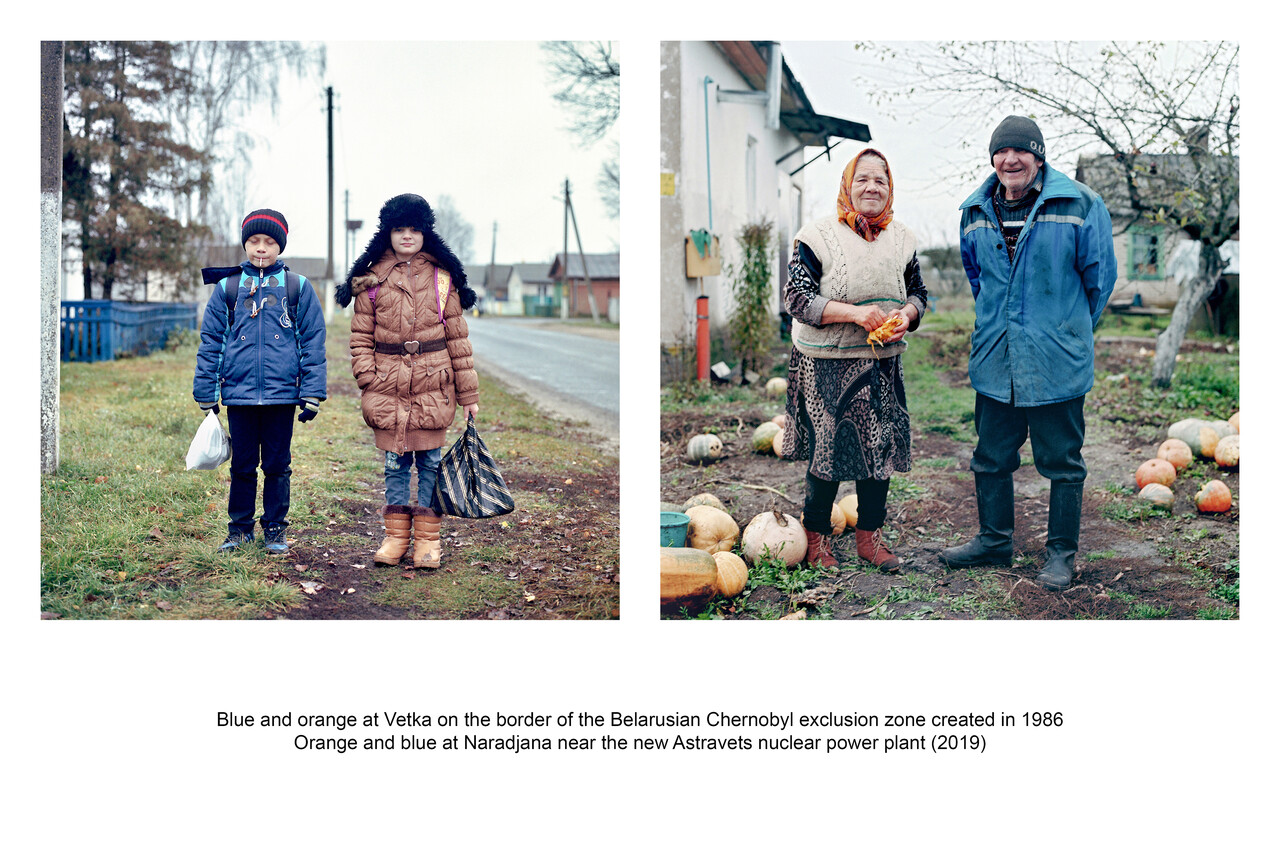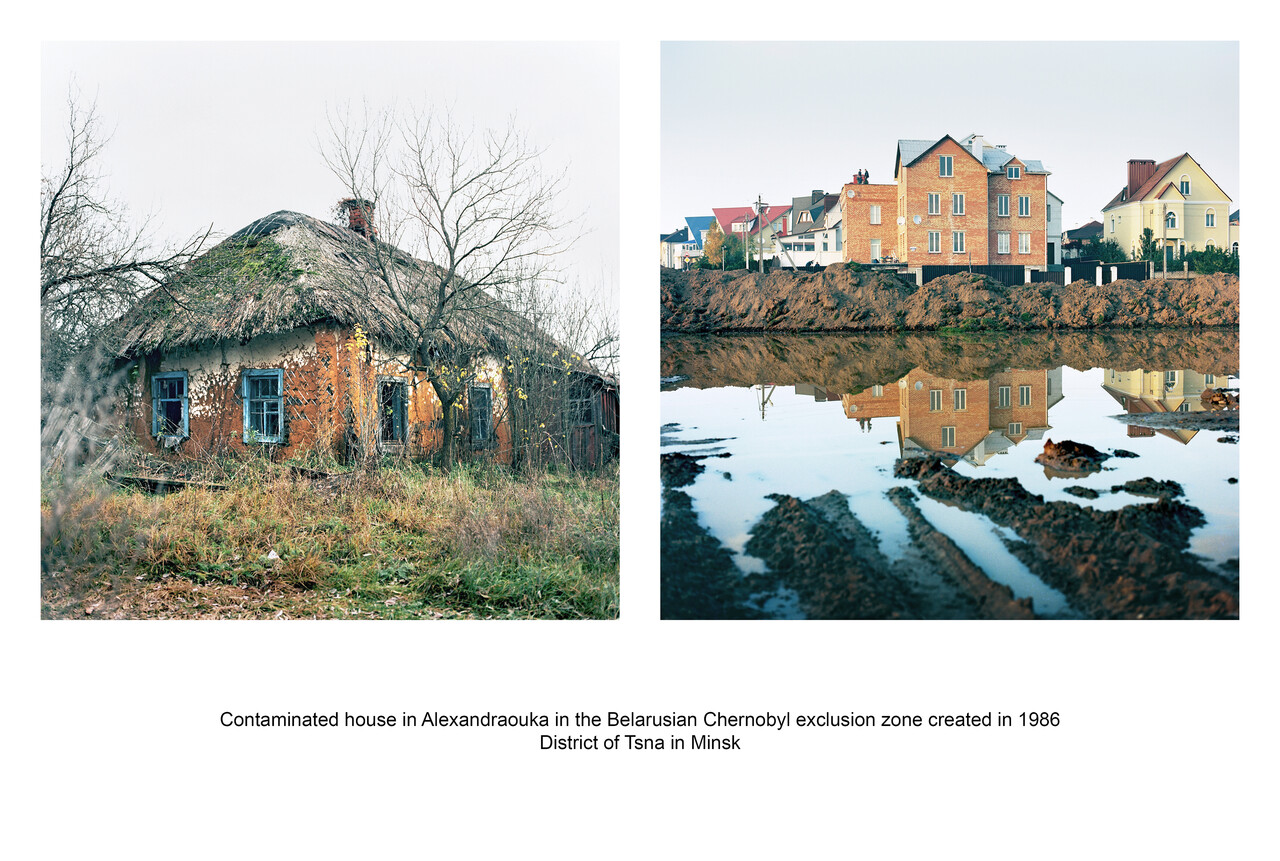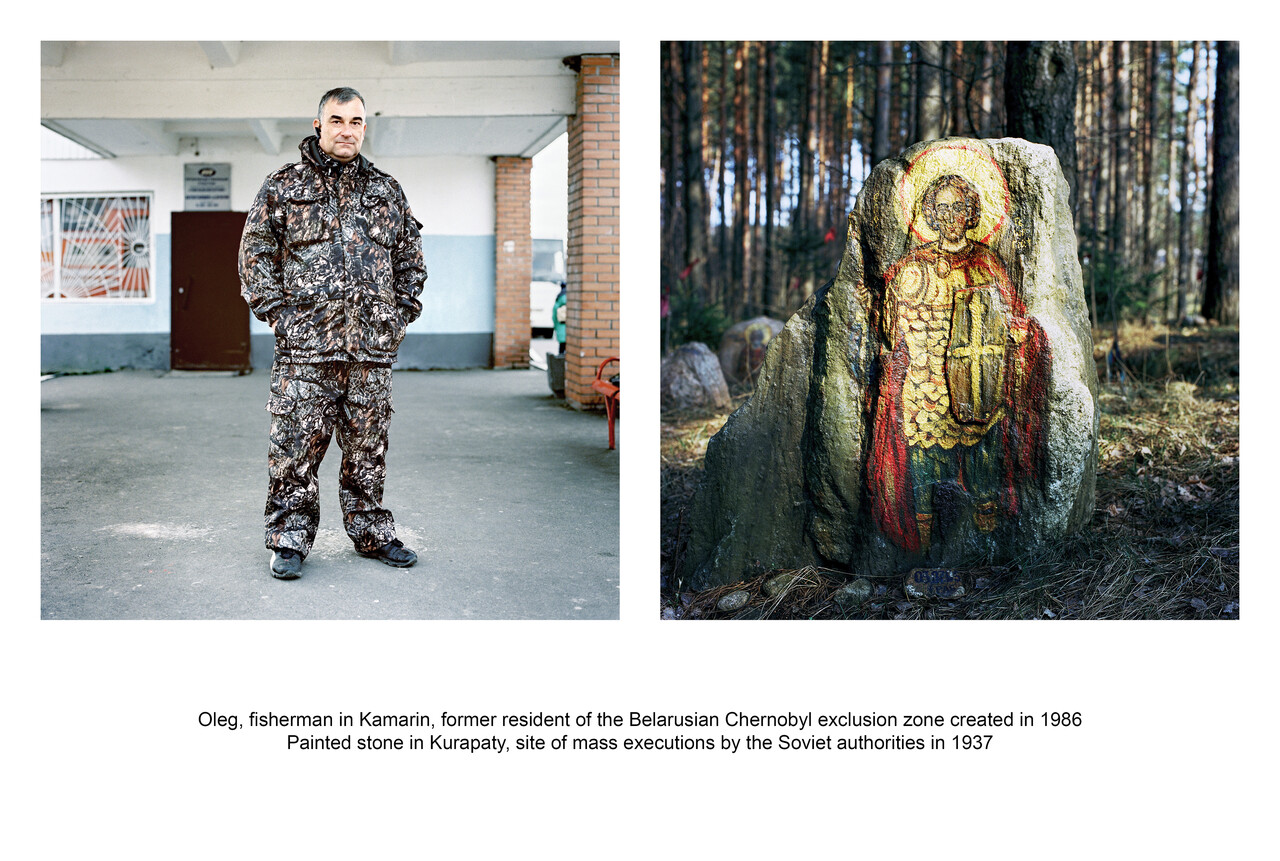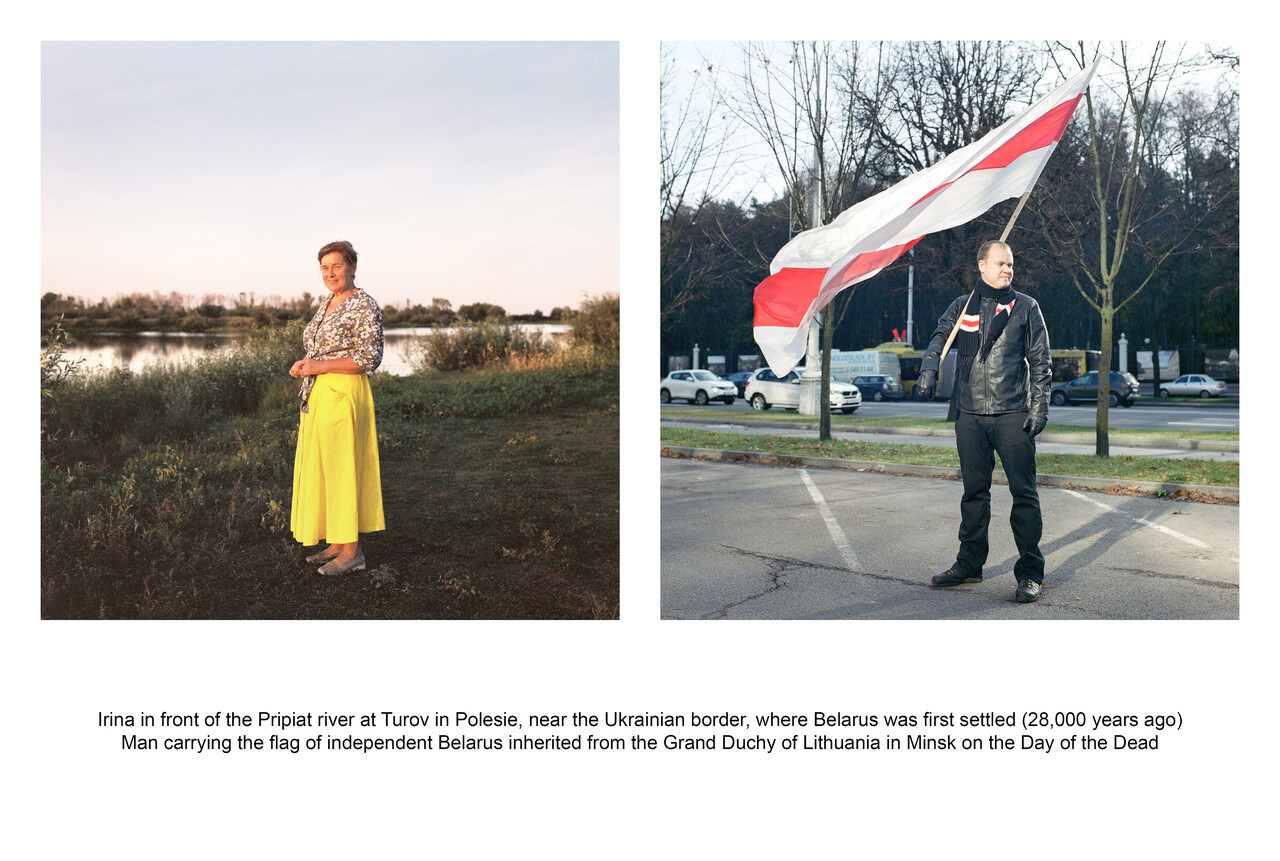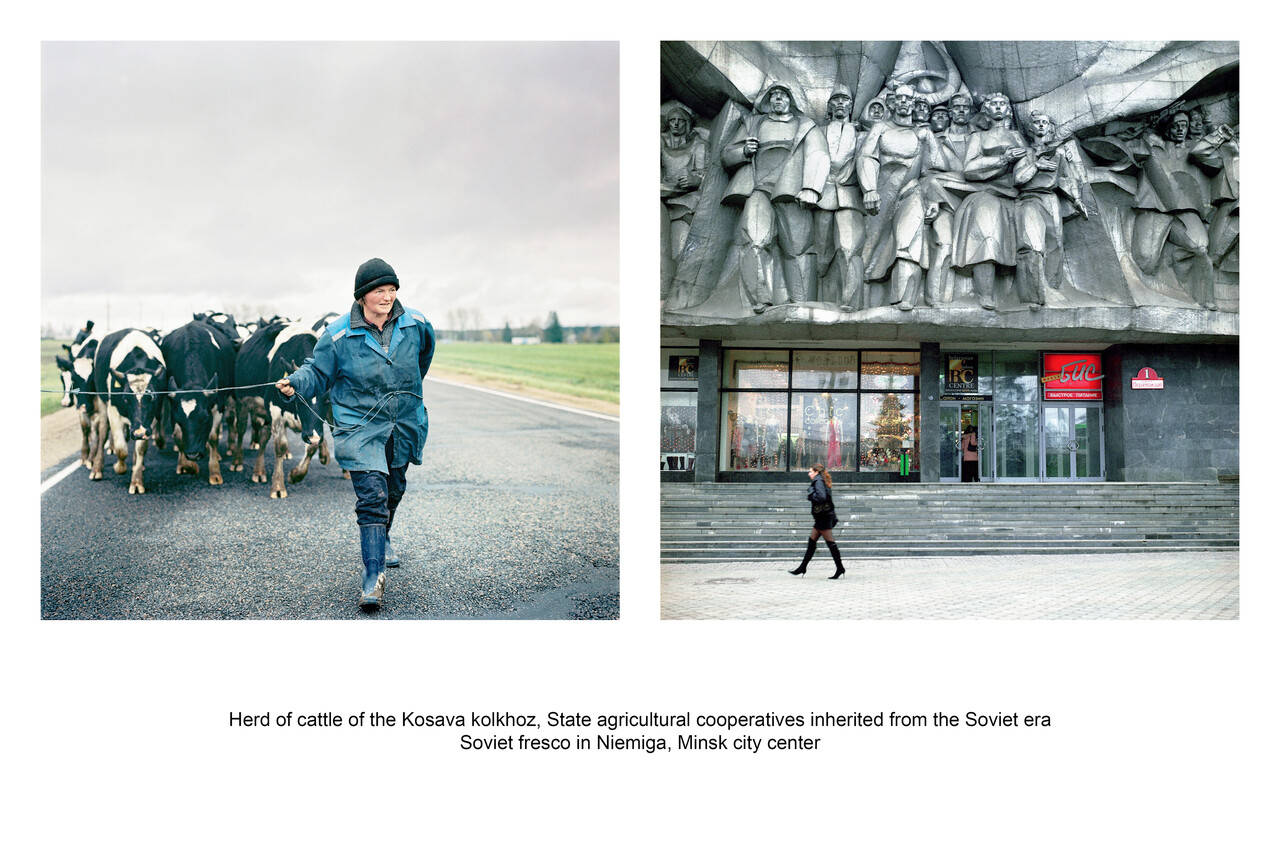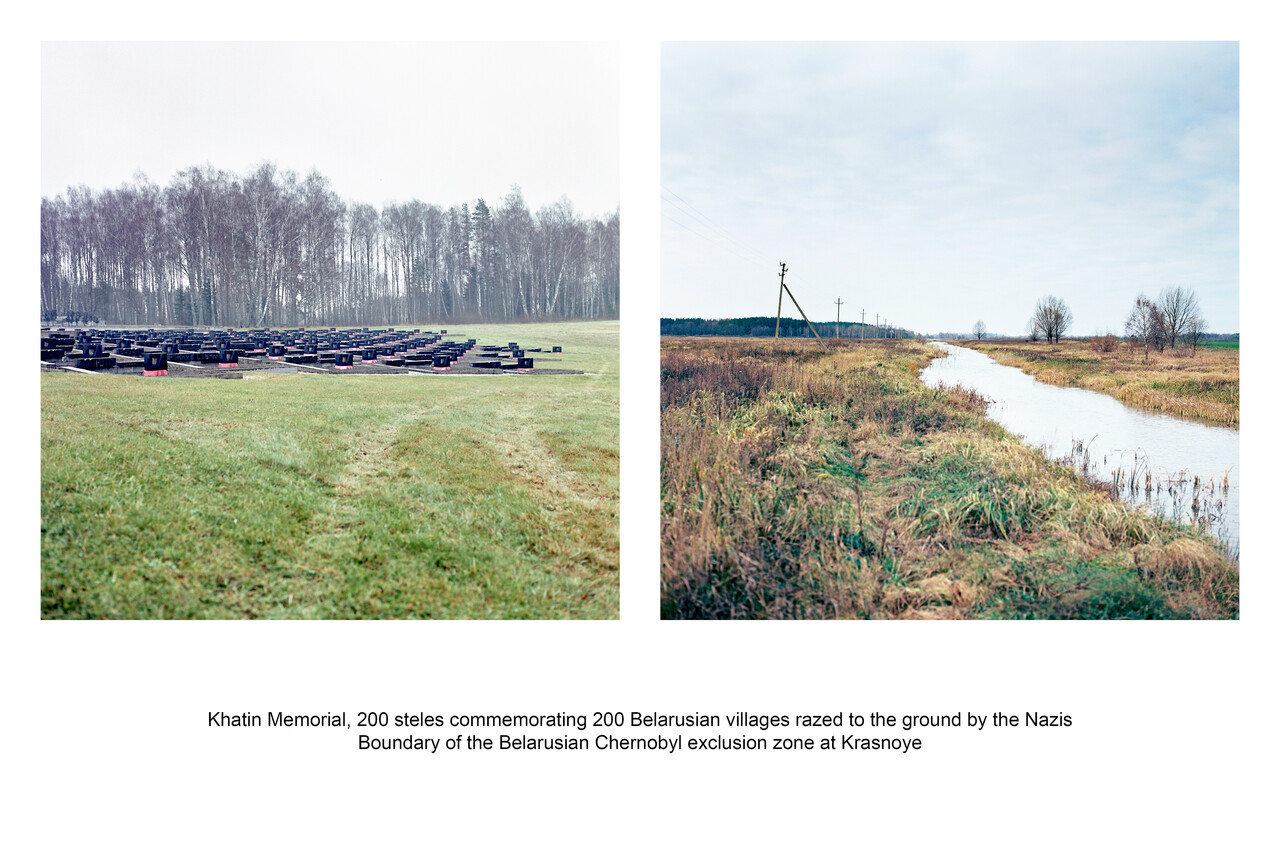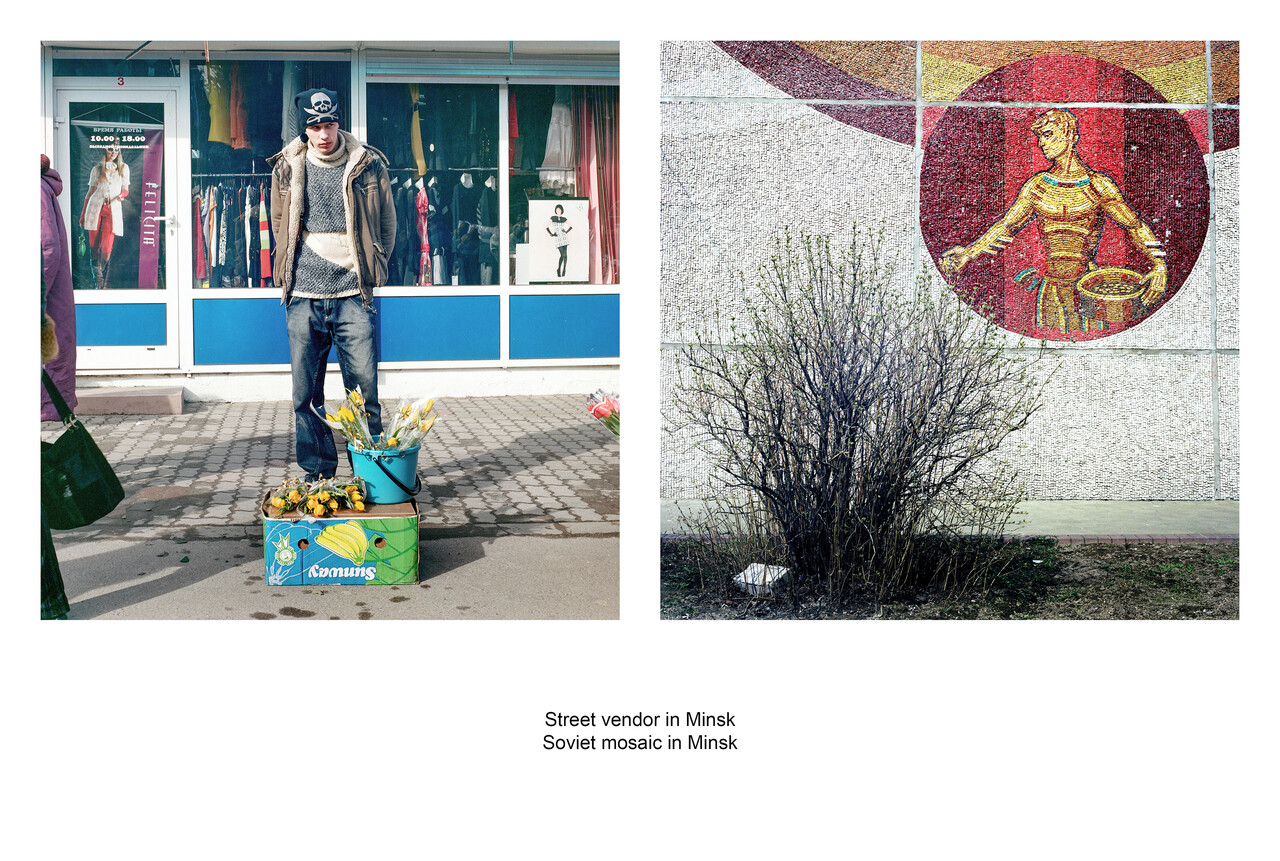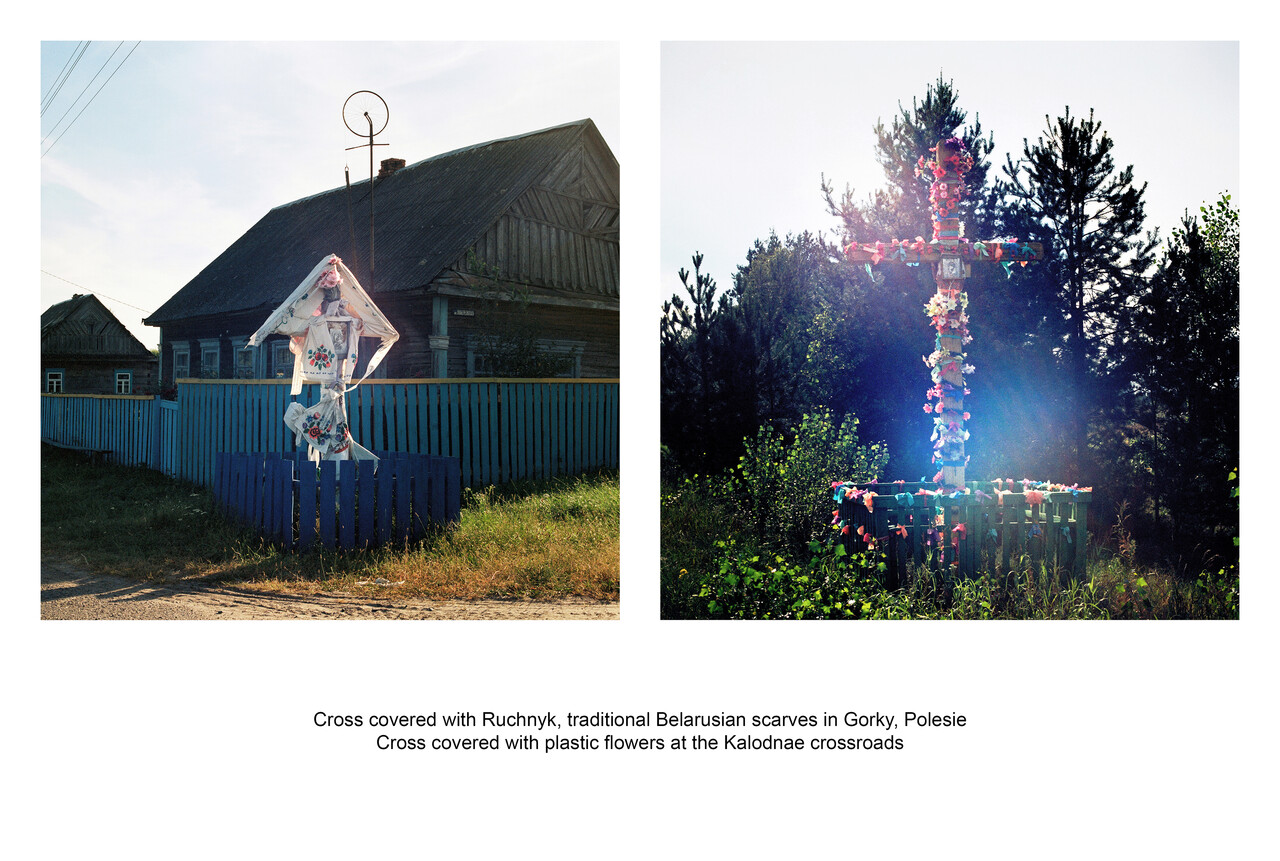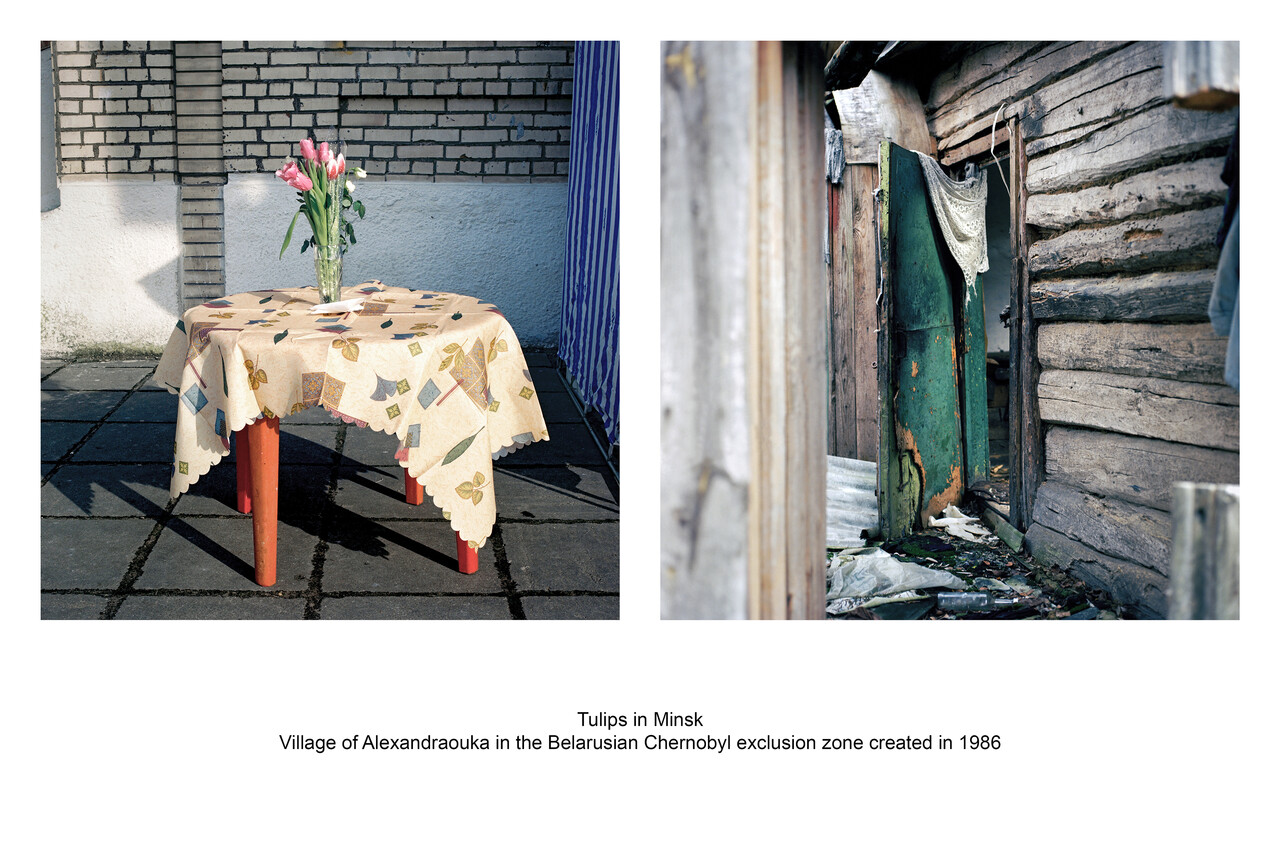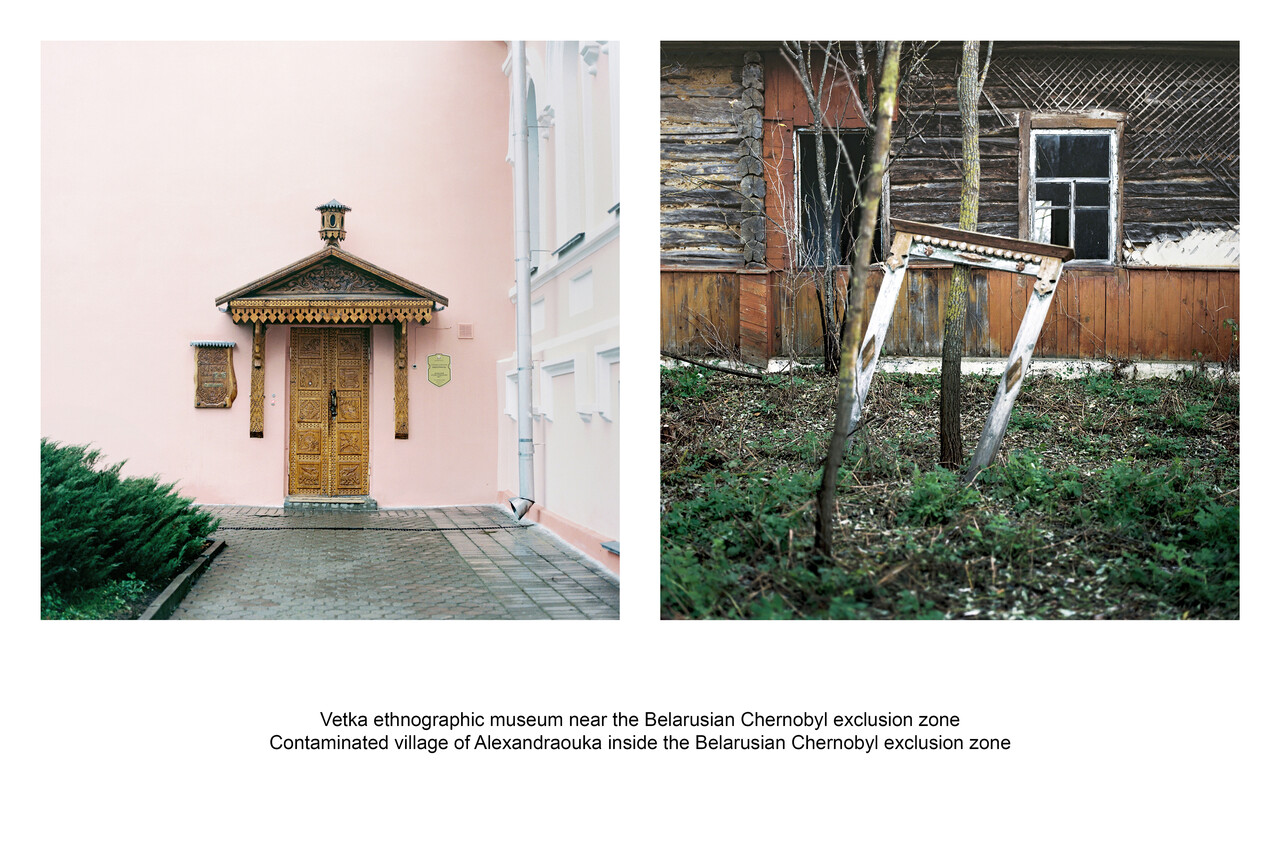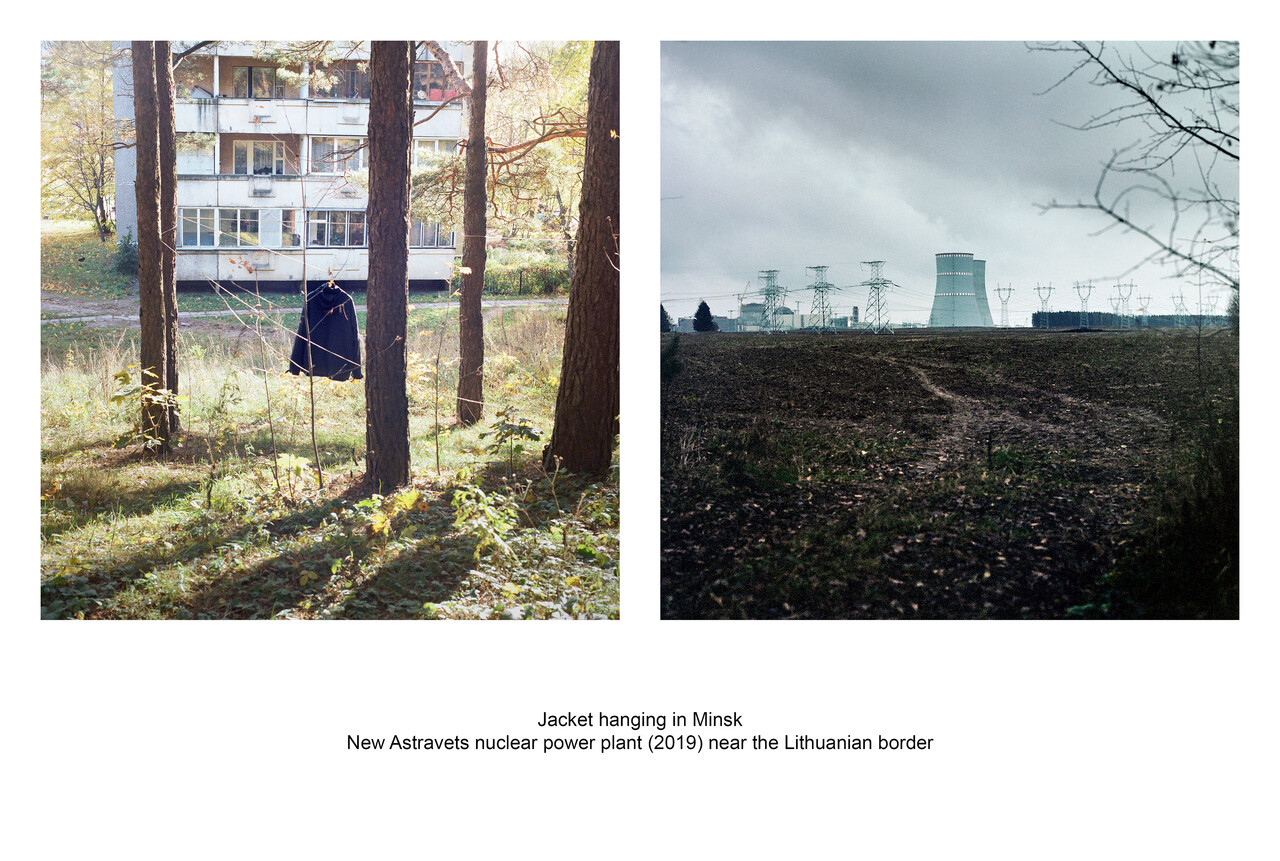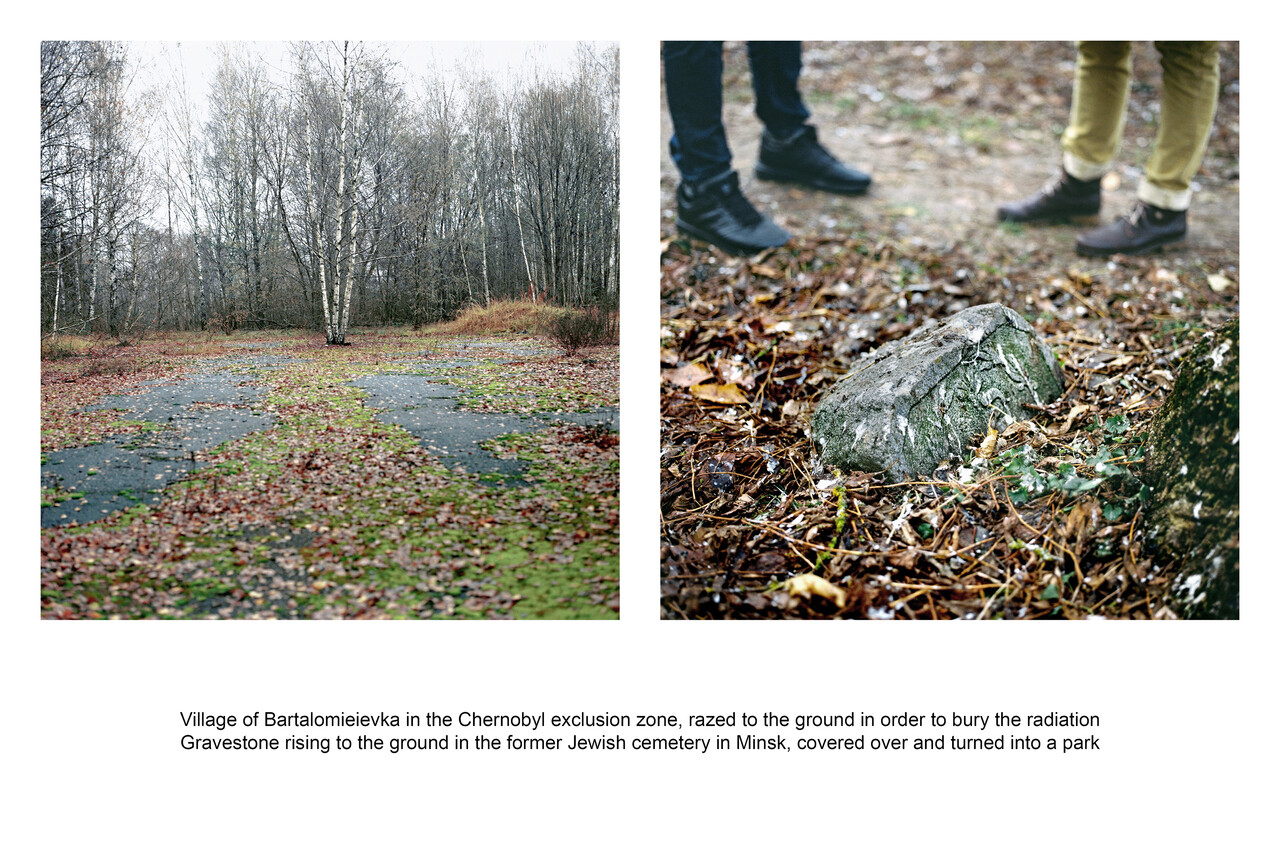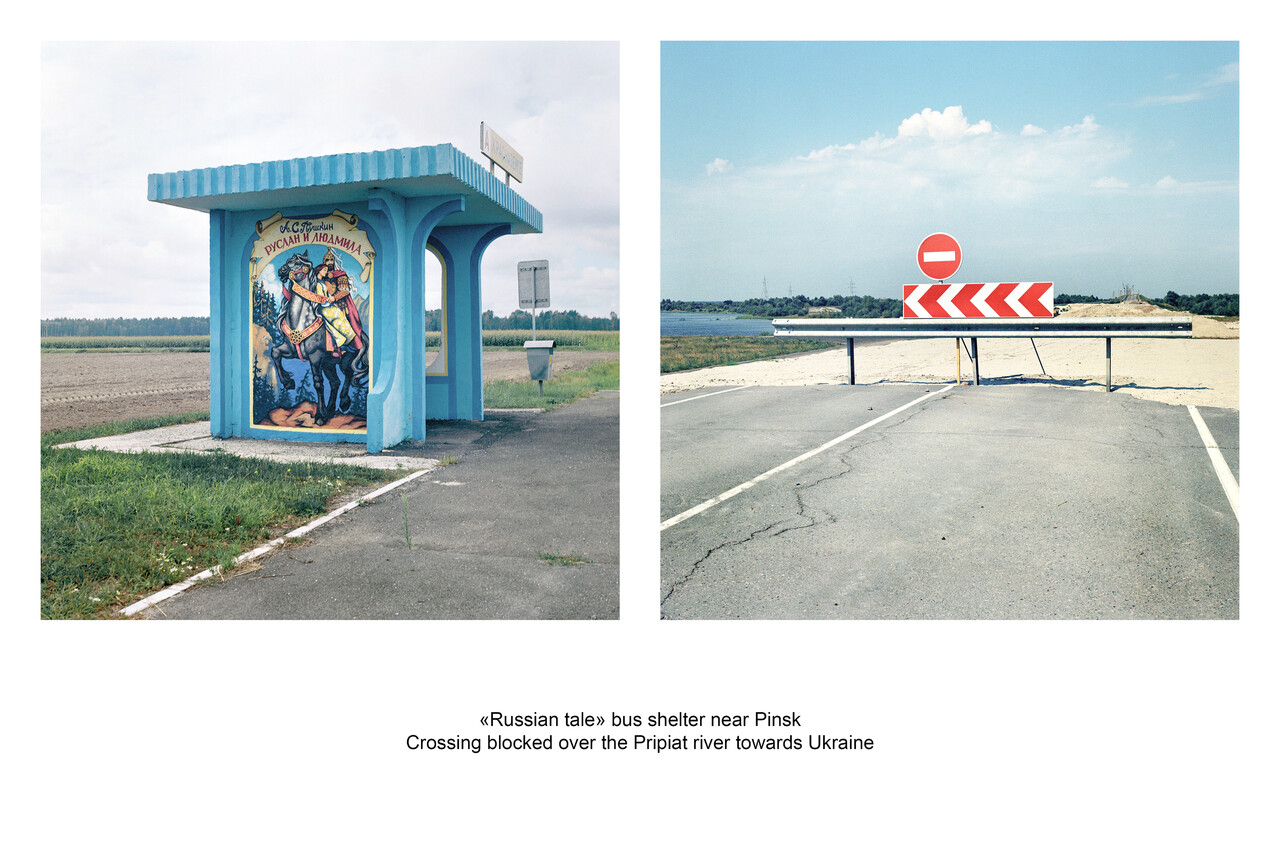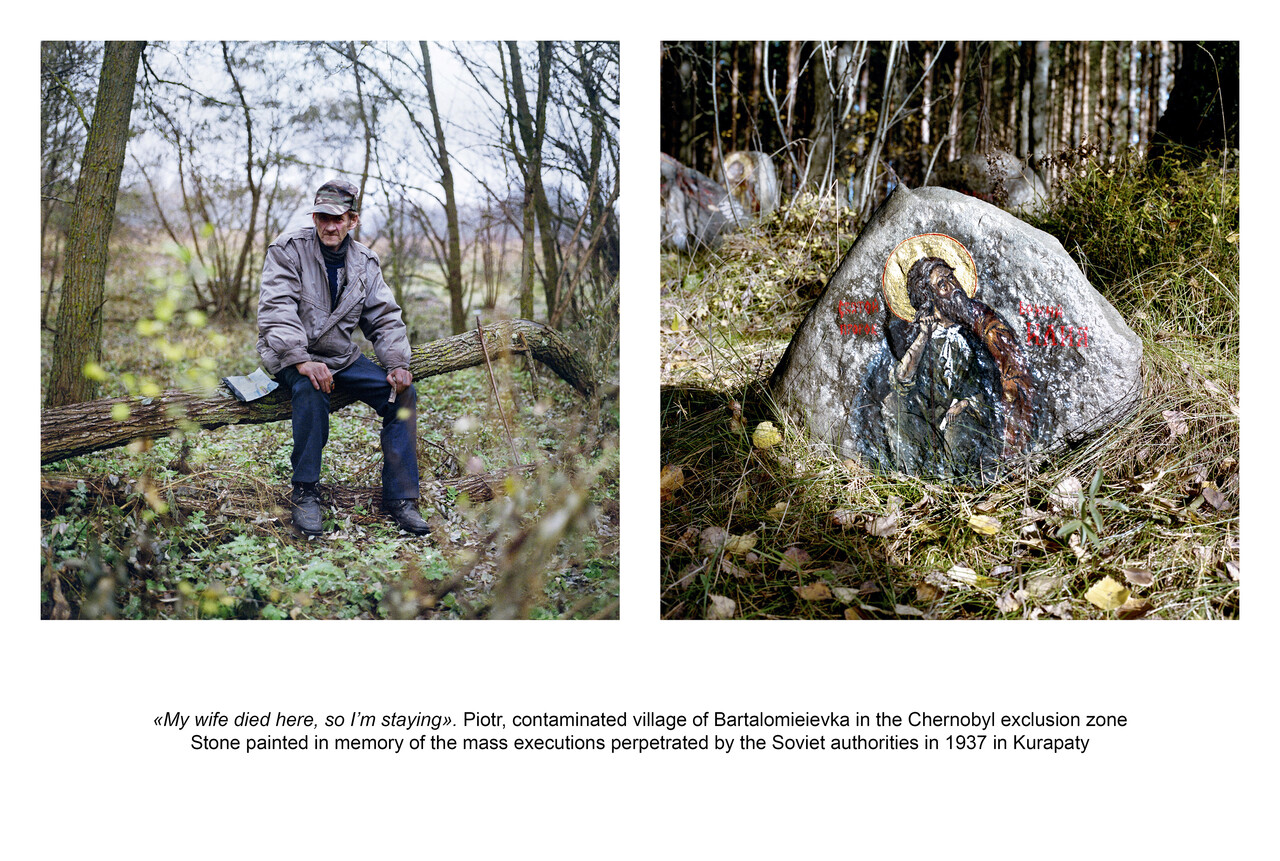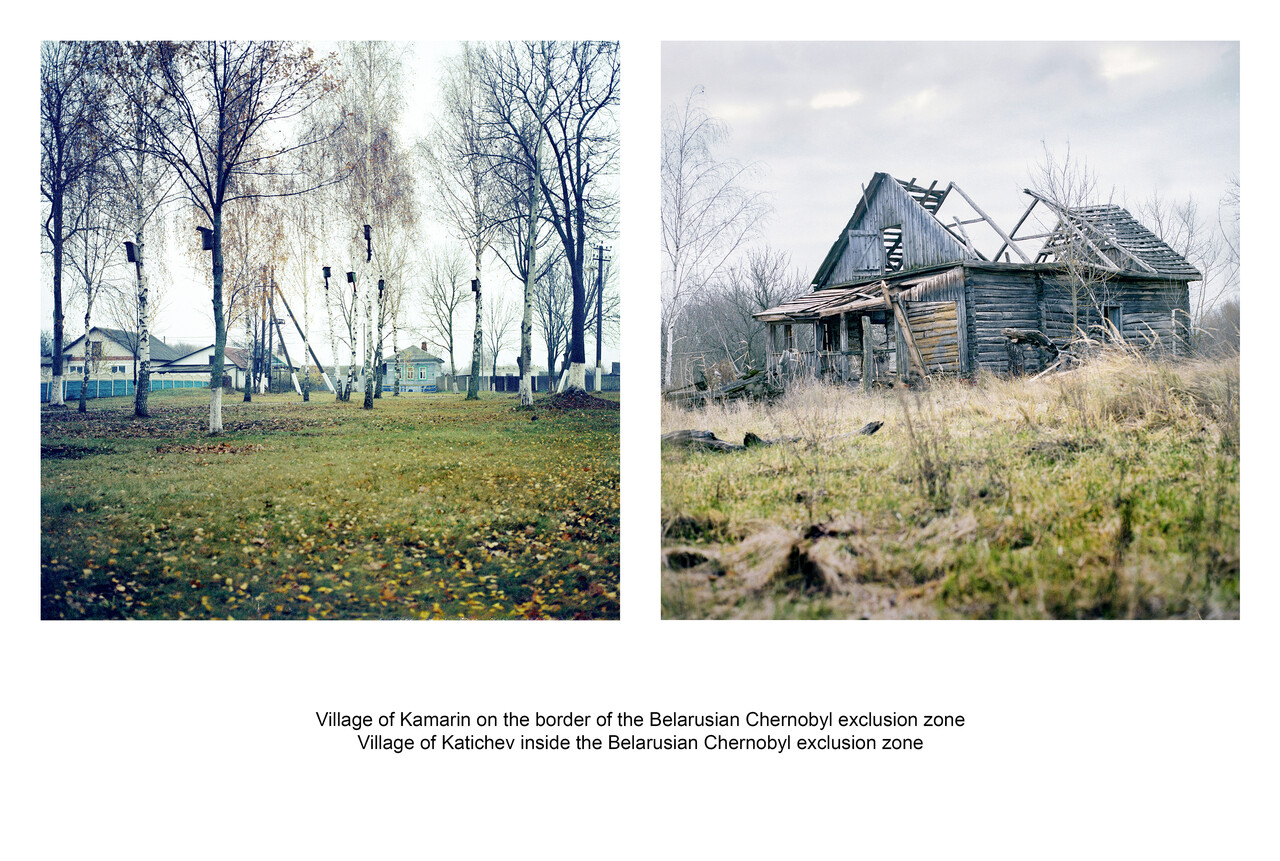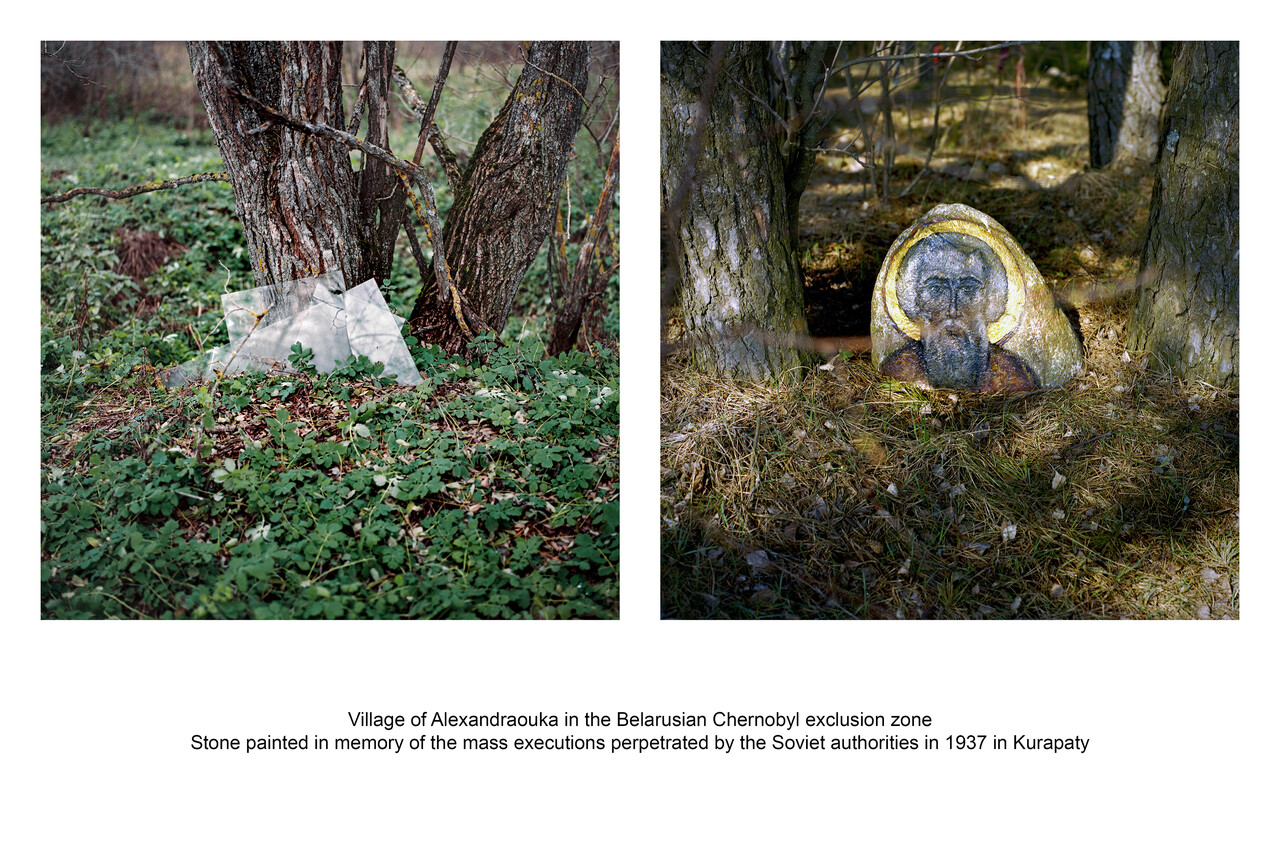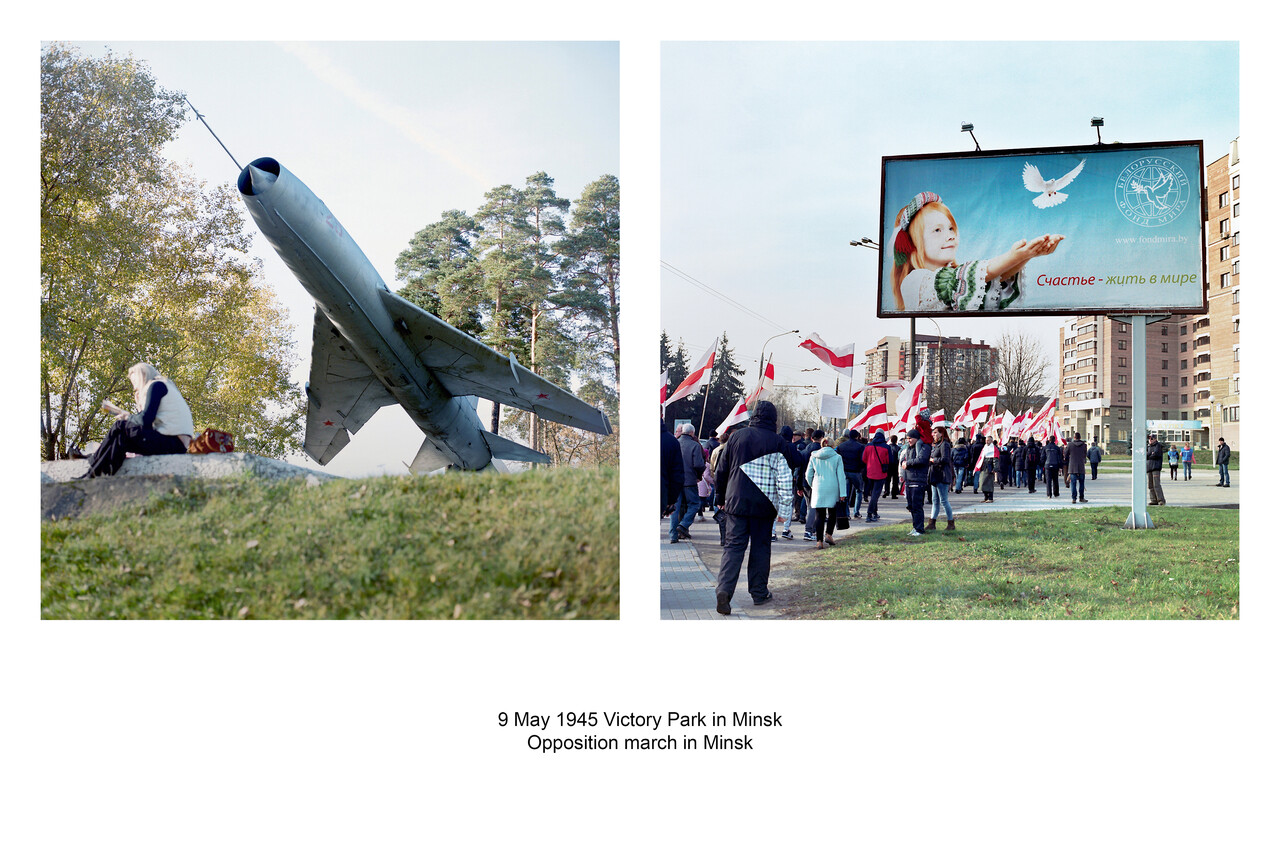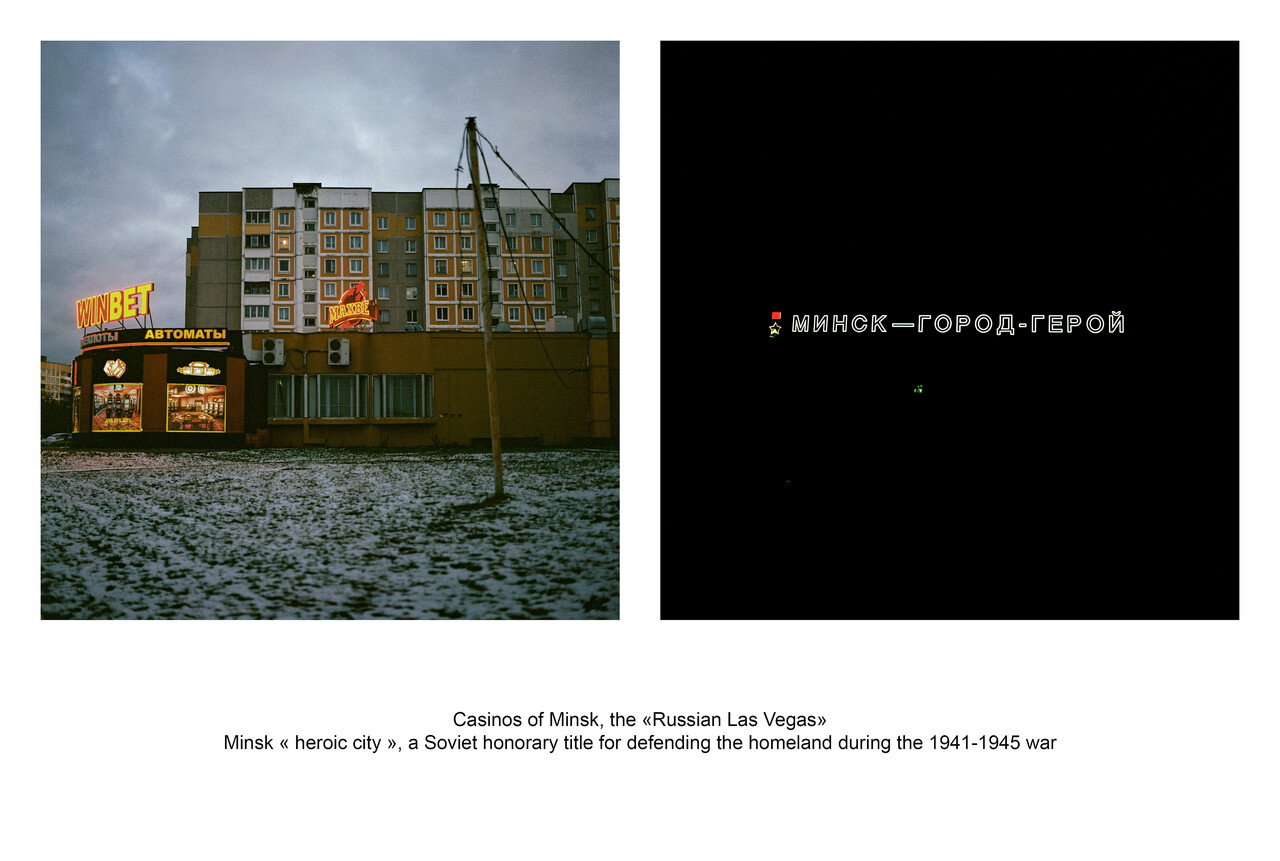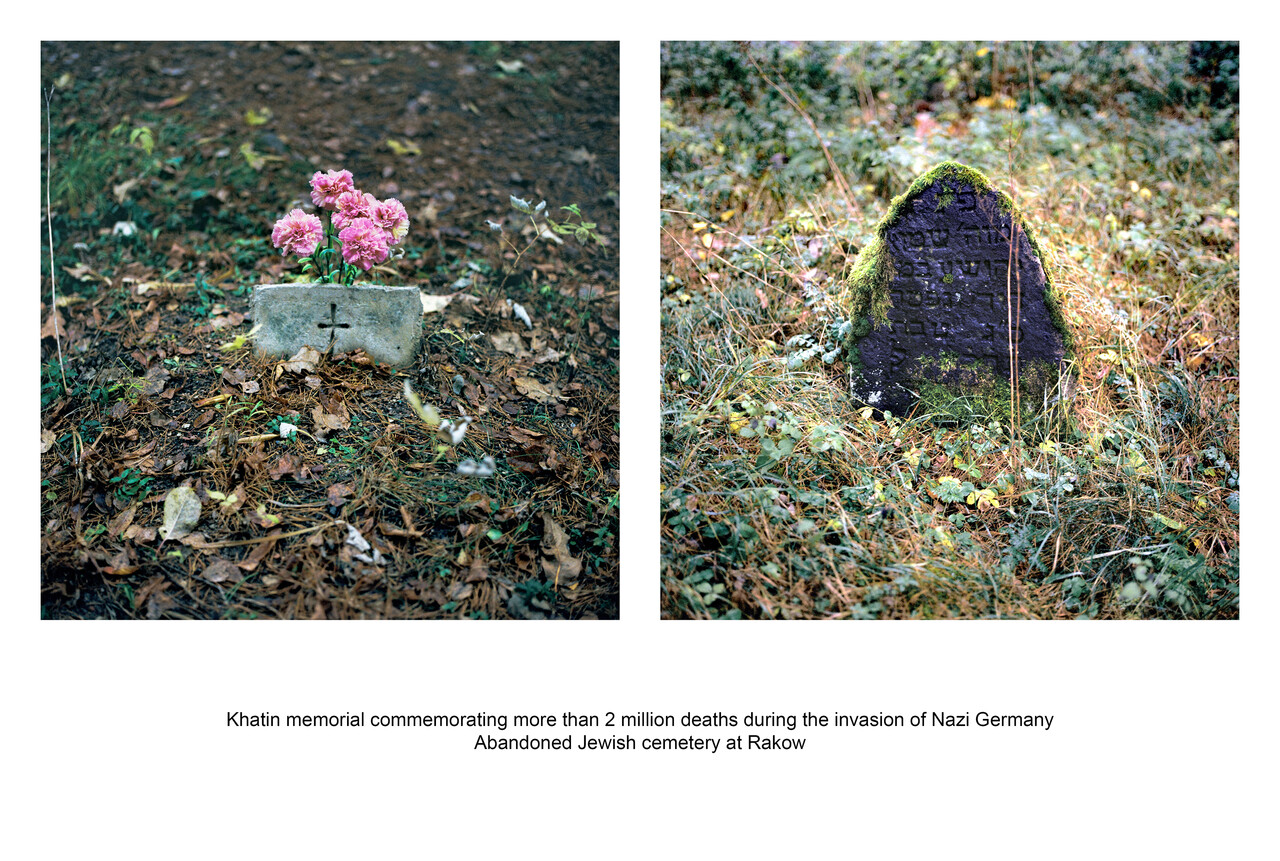BELARUS' LEGACY
BELARUS' LEGACY documents the post-Soviet Belarus of President Alexander Lukashenko in power for the last 29 years. This work explores different historical places in order to identify in depth the Belarusian identity.
The occultation of the past or its diversion for political purposes characterizes Belarus. Apart from the official historiography, it is excluded to analyze the past and to learn from it. This selective forgetting slows down the emergence of a collective identity, favoring the perpetuation of the system in place. As Tatyana Glukhova writes: "Memory is constitutive of identity... It is precisely the discontinuity, the intermittence that best characterizes the Belarusian collective memory." Tatiana Glukhova "The Belarusian identity: collective memory and contemporary constructions"
Invasion of Nazi Germany, Soviet mass executions, the explosion of the Chernobyl power plant with 70% of the radioactivity falling on the Belarusian territory... The list of traumatic events that shape the country is long; in a century almost 5 million inhabitants have been killed by wars, repressions and contamination (out of a population of 10 million). Nowadays Russia is tightening its grip again with the commissioning of the Astravets nuclear power plant and the participation of Belarus in the war effort against Ukraine.
Belarus resists, silently, underground. Its identity is fragmented, but it is still there, like those rocks scattered in the landscape that cannot be destroyed and that we prefer to repaint, generation after generation.
Recent chronology
26000 BC. First traces of settlement in Polesie, southern Belorussia.
1793. The territory of Belarus, part of Polish-Lithuanian-Belarusian Commonwealth is annexed by Russia.
1812. Battle of Berezina, defeat of France allied to Belarusians against Russia. One million dead. (1 inhabitant of 4)
1915-1918. World War I, the front line Germany-Russia passed through the territory of Belarus at Rakow. One million 200 000 dead.
1917. October Revolution in Russia. March 1918. Proclamation of the Belarusian People's Republic. December 1918. Annexation of Belarus by the Red Army.
1937. Soviet mass executions, 200,000 dead in Kourapaty, a suburb of Minsk.
1939-1945. World War II. Invasion of Nazi Germany: more than 2 million killed, 200 fully razed villages, 100,000 Jews in the Minsk ghetto.
1944 Soviet troops liberate Belarus and Minsk is destroyed by 90%.
26 April 1986. Explosion of the Chernobyl atomic power plant with 70% of the radioactivity returned to Belarus, 200 000 deaths and 2 million inhabitants contaminated. Creation by the Soviet Army of the exclusion zone of Chernobyl, 30 kilometers around the power station; Ukraine (40%) and Belarus (60%).
1991. Collapse of the USSR and creation of the Republic of Belarus. The country is reappropriating its symbols, the Pahonia and the white, red, white flag.
1994 to today. Election of Alexander Lukashenko, nostalgic of the Soviet era and restoration of the Soviet flag, kolkhozes and KGB.
2020. Commissioning of the new Astravets nuclear power plant built by Russia.
//
BELARUS’ LEGACY documente le Bélarus de la période post-soviétique du Président Alexander Loukachenko au pouvoir depuis 29 ans. Ce travail explore différents lieux historiques afin de cerner en profondeur l’identité biélorusse.
L’occultation du passé ou son dévoiement à des fins politiques caractérise le Bélarus. Hormis l’historiographie officielle, il est exclu d’analyser le passé et d’apprendre de lui. Cet oubli sélectif ralentit l’émergence d’une identité collective, favorisant la perpétuation du système en place.
Comme l’écrit Tatiana Gloukhova : « La mémoire est constitutive de l’identité… C'est justement la discontinuité, l'intermittence qui caractérise le mieux la mémoire collective biélorusse. » Tatiana Glukhova “The Belarusian identity: collective memory and contemporary constructions”
Invasion de l’Allemagne nazie, exécutions de masse soviétiques, explosion de la centrale de Tchernobyl avec 70% de la radioactivité retombée sur le territoire biélorusse… La liste des évènements traumatisants qui façonnent le pays est longue ; en un siècle presque 5 millions d’habitants ont été tués par les guerres, les répressions et la contamination (sur une population de 10 millions). De nos jours la Russie resserre à nouveaux son emprise avec la mise en service de la centrale nucléaire d’Astravets et la participation du Bélarus à l’effort de guerre contre l’Ukraine.
Le Bélarus résiste, silencieusement, souterrainement. Son identité est fragmentée, mais elle est bien là, comme ces rochers disséminés dans le paysage qu’on ne peut détruire et qu’on préfère repeindre, génération après génération.
Chronologie sélective:
26000 ans av. J.-C. Premier peuplement de la Biélorussie en Polésie au sud.
1793. le Grand Duché de Lituanie (Pologne, Biélorussie et Lituanie) est annexé par la Russie.
1812. Bataille de la Bérézina, défaite de la France alliée aux Biélorusses contre la Russie. Un million de morts. (1habitant sur 4)
1915-1918. Première Guerre mondiale, la ligne de front Allemagne-Russie passe à travers le territoire Biélorusse à Rakow. Un million 200 000 morts.
1917. Révolution d’Octobre en Russie. Mars 1918. Proclamation de la République populaire biélorusse. Décembre 1918. Annexion de la Biélorussie par l’Armée rouge.
1937. Exécutions de masse par le pouvoir soviétique, 200 000 morts à Kurapaty près de Minsk.
1939-1945. Seconde Guerre mondiale. Invasion de l’Allemagne nazie : plus de 2 millions de tués, 200 villages entièrement rasés. 100 000 juifs dans le ghetto de Minsk.
26 avril 1986. Explosion de la centrale de Tchernobyl avec 70% de la radioactivité retombée en Biélorussie, 200 000 morts et 2 millions d’habitants contaminés. Création par l’Armée soviétique de la zone d’exclusion de Tchernobyl.
1991. Effondrement de l’URSS et création de la République de Biélorussie.
1994 à aujourd’hui. Election d’Alexandre Loukachenko, retour de l'époque soviétique.
2020. Mise en service de la centrale nucléaire d’Astravets construite par la Russie.
The occultation of the past or its diversion for political purposes characterizes Belarus. Apart from the official historiography, it is excluded to analyze the past and to learn from it. This selective forgetting slows down the emergence of a collective identity, favoring the perpetuation of the system in place. As Tatyana Glukhova writes: "Memory is constitutive of identity... It is precisely the discontinuity, the intermittence that best characterizes the Belarusian collective memory." Tatiana Glukhova "The Belarusian identity: collective memory and contemporary constructions"
Invasion of Nazi Germany, Soviet mass executions, the explosion of the Chernobyl power plant with 70% of the radioactivity falling on the Belarusian territory... The list of traumatic events that shape the country is long; in a century almost 5 million inhabitants have been killed by wars, repressions and contamination (out of a population of 10 million). Nowadays Russia is tightening its grip again with the commissioning of the Astravets nuclear power plant and the participation of Belarus in the war effort against Ukraine.
Belarus resists, silently, underground. Its identity is fragmented, but it is still there, like those rocks scattered in the landscape that cannot be destroyed and that we prefer to repaint, generation after generation.
Recent chronology
26000 BC. First traces of settlement in Polesie, southern Belorussia.
1793. The territory of Belarus, part of Polish-Lithuanian-Belarusian Commonwealth is annexed by Russia.
1812. Battle of Berezina, defeat of France allied to Belarusians against Russia. One million dead. (1 inhabitant of 4)
1915-1918. World War I, the front line Germany-Russia passed through the territory of Belarus at Rakow. One million 200 000 dead.
1917. October Revolution in Russia. March 1918. Proclamation of the Belarusian People's Republic. December 1918. Annexation of Belarus by the Red Army.
1937. Soviet mass executions, 200,000 dead in Kourapaty, a suburb of Minsk.
1939-1945. World War II. Invasion of Nazi Germany: more than 2 million killed, 200 fully razed villages, 100,000 Jews in the Minsk ghetto.
1944 Soviet troops liberate Belarus and Minsk is destroyed by 90%.
26 April 1986. Explosion of the Chernobyl atomic power plant with 70% of the radioactivity returned to Belarus, 200 000 deaths and 2 million inhabitants contaminated. Creation by the Soviet Army of the exclusion zone of Chernobyl, 30 kilometers around the power station; Ukraine (40%) and Belarus (60%).
1991. Collapse of the USSR and creation of the Republic of Belarus. The country is reappropriating its symbols, the Pahonia and the white, red, white flag.
1994 to today. Election of Alexander Lukashenko, nostalgic of the Soviet era and restoration of the Soviet flag, kolkhozes and KGB.
2020. Commissioning of the new Astravets nuclear power plant built by Russia.
//
BELARUS’ LEGACY documente le Bélarus de la période post-soviétique du Président Alexander Loukachenko au pouvoir depuis 29 ans. Ce travail explore différents lieux historiques afin de cerner en profondeur l’identité biélorusse.
L’occultation du passé ou son dévoiement à des fins politiques caractérise le Bélarus. Hormis l’historiographie officielle, il est exclu d’analyser le passé et d’apprendre de lui. Cet oubli sélectif ralentit l’émergence d’une identité collective, favorisant la perpétuation du système en place.
Comme l’écrit Tatiana Gloukhova : « La mémoire est constitutive de l’identité… C'est justement la discontinuité, l'intermittence qui caractérise le mieux la mémoire collective biélorusse. » Tatiana Glukhova “The Belarusian identity: collective memory and contemporary constructions”
Invasion de l’Allemagne nazie, exécutions de masse soviétiques, explosion de la centrale de Tchernobyl avec 70% de la radioactivité retombée sur le territoire biélorusse… La liste des évènements traumatisants qui façonnent le pays est longue ; en un siècle presque 5 millions d’habitants ont été tués par les guerres, les répressions et la contamination (sur une population de 10 millions). De nos jours la Russie resserre à nouveaux son emprise avec la mise en service de la centrale nucléaire d’Astravets et la participation du Bélarus à l’effort de guerre contre l’Ukraine.
Le Bélarus résiste, silencieusement, souterrainement. Son identité est fragmentée, mais elle est bien là, comme ces rochers disséminés dans le paysage qu’on ne peut détruire et qu’on préfère repeindre, génération après génération.
Chronologie sélective:
26000 ans av. J.-C. Premier peuplement de la Biélorussie en Polésie au sud.
1793. le Grand Duché de Lituanie (Pologne, Biélorussie et Lituanie) est annexé par la Russie.
1812. Bataille de la Bérézina, défaite de la France alliée aux Biélorusses contre la Russie. Un million de morts. (1habitant sur 4)
1915-1918. Première Guerre mondiale, la ligne de front Allemagne-Russie passe à travers le territoire Biélorusse à Rakow. Un million 200 000 morts.
1917. Révolution d’Octobre en Russie. Mars 1918. Proclamation de la République populaire biélorusse. Décembre 1918. Annexion de la Biélorussie par l’Armée rouge.
1937. Exécutions de masse par le pouvoir soviétique, 200 000 morts à Kurapaty près de Minsk.
1939-1945. Seconde Guerre mondiale. Invasion de l’Allemagne nazie : plus de 2 millions de tués, 200 villages entièrement rasés. 100 000 juifs dans le ghetto de Minsk.
26 avril 1986. Explosion de la centrale de Tchernobyl avec 70% de la radioactivité retombée en Biélorussie, 200 000 morts et 2 millions d’habitants contaminés. Création par l’Armée soviétique de la zone d’exclusion de Tchernobyl.
1991. Effondrement de l’URSS et création de la République de Biélorussie.
1994 à aujourd’hui. Election d’Alexandre Loukachenko, retour de l'époque soviétique.
2020. Mise en service de la centrale nucléaire d’Astravets construite par la Russie.
